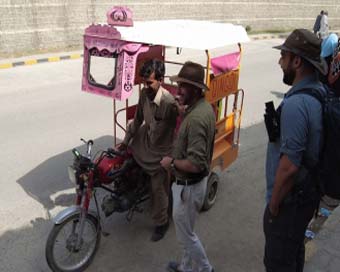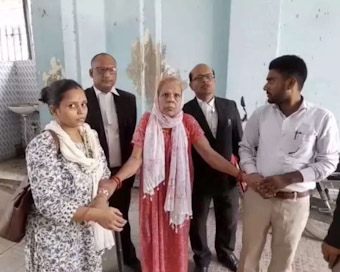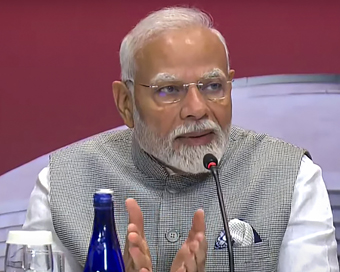 PM Modi visit USA
PM Modi visit USA Only the mirror in my washroom and phone gallery see the crazy me : Sara Khan
Only the mirror in my washroom and phone gallery see the crazy me : Sara Khan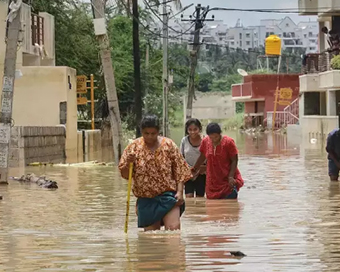 Karnataka rain fury: Photos of flooded streets, uprooted trees
Karnataka rain fury: Photos of flooded streets, uprooted trees Cannes 2022: Deepika Padukone stuns at the French Riviera in Sabyasachi outfit
Cannes 2022: Deepika Padukone stuns at the French Riviera in Sabyasachi outfit Ranbir Kapoor And Alia Bhatt's Wedding Pics - Sealed With A Kiss
Ranbir Kapoor And Alia Bhatt's Wedding Pics - Sealed With A Kiss Oscars 2022: Every Academy Award Winner
Oscars 2022: Every Academy Award Winner Shane Warne (1969-2022): Australian cricket legend's life in pictures
Shane Warne (1969-2022): Australian cricket legend's life in pictures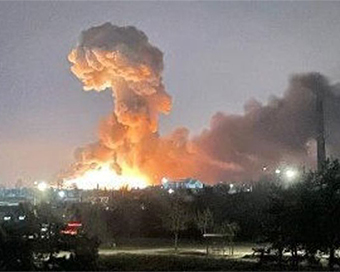 Photos: What Russia's invasion of Ukraine looks like on the ground
Photos: What Russia's invasion of Ukraine looks like on the ground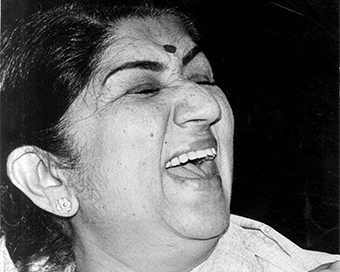 Lata Mangeshkar (1929-2022): A pictorial tribute to the 'Nightingale of India'
Lata Mangeshkar (1929-2022): A pictorial tribute to the 'Nightingale of India'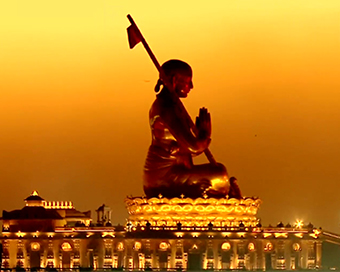 PM Modi unveils 216-feet tall Statue of Equality in Hyderabad (PHOTOS)
PM Modi unveils 216-feet tall Statue of Equality in Hyderabad (PHOTOS)Hockey India has announced a 54-member core probable squad for the upcoming senior men’s
- Satwik-Chirag return as BAI names 14-strong squad for BWF Sudirman Cup Finals 2025
- Men’s Sr Hockey Nationals to be played in division-based format from April 4
- Mensik denies Djokovic 100th title in Miami final
- KIPG: Son of a vegetable vendor, Bihar’s Jhandu Kumar eyes Worlds, 2028 Paralympics
- Hardik Singh credits hard work and team unity for receiving HI Midfielder of the Year award
Indus civilisation developed around an extinct river: Study Last Updated : 29 Nov 2017 06:58:32 PM IST 
(File Photo)
Contrary to current belief, it was the departure of a large river - not its arrival -- that triggered the growth of Indus urban centres that developed in what is now northwest India and Pakistan some 5,300 years ago, says a new study.
The Indus civilisation developed at about the same time as urban civilisations developed in Mesopotamia and Egypt.
Archaeological evidence shows that many of the settlements in the Indus civilisation developed along the banks of a river called the Ghaggar-Hakra.
But the new study, led by researchers from the Indian Institute of Technology (IIT) Kanpur and Imperial College London, has now provided evidence that a major Himalayan river did not flow at the same time as the development of Indus civilisation urban settlements.
"The findings challenge our current understanding of how urbanisation in many ancient civilisations began and grew in relation to natural resources," said lead author Sanjeev Gupta, Professor at Imperial.
The study, published in the journal Nature Communications, showed that today's Sutlej River used to flow along the trace of the Ghaggar-Hakra river but rapidly changed course upstream eight thousand years ago.
This meant that three thousand years later, when the Indus people settled the area, there was only an abandoned large river valley occupied by seasonal monsoon river flow instead of a large Himalayan river.
The researchers said the time gap between the river shifting course and the Indus civilisation settlements appearing rules out the existence of a Himalayan-fed river that nourished Indus civilisation urban settlements along the river channel.
The team was also able to pinpoint what the original source of the river sediments had been, showing that the Sutlej had once flowed along the Ghaggar-Hakra dried river channel, or palaeochannel.
They found that after the Sutlej changed course, the scar it left in the landscape acted as a topographic low to capture river flow during the monsoon.
This meant that despite not living along a permanent river, the Indus settlements still benefited from a water source.
"We now know that, given the right conditions, valleys that have lost their rivers can still serve as a water source. The civilisation would also not have been threatened by the risk of devastating floods that living next to a big river brings," study co-author Rajiv Sinha, Professor at IIT Kanpur, said.
To determine the timing of the river, the team drilled cores through the dried Ghaggar-Hakra river bed and analysed the layers of river sediments that had built up over time.
They used a method, called optically stimulated luminescence dating, to determine when the river last flowed.
The team were also able to determine where the original material in the river came from by dating mineral grains such as zircon and mica, revealing the previous course of the river.
Most major ancient urban civilisations, such as Egypt and Mesopotamia, formed around big rivers.
This research showed how ancient urban centres did not necessarily need an active, flowing river system in order to thrive.
The research could help archaeologists to take a fresh look at the development of urbanisation in early civilisations because research in this area has been focusing mainly on the role of rivers drying up leading to abandonment of urban centres by ancient communities.
_
_SHOW_MID_AD__
IANS For Latest Updates Please-
Join us on
Follow us on








172.31.16.186


